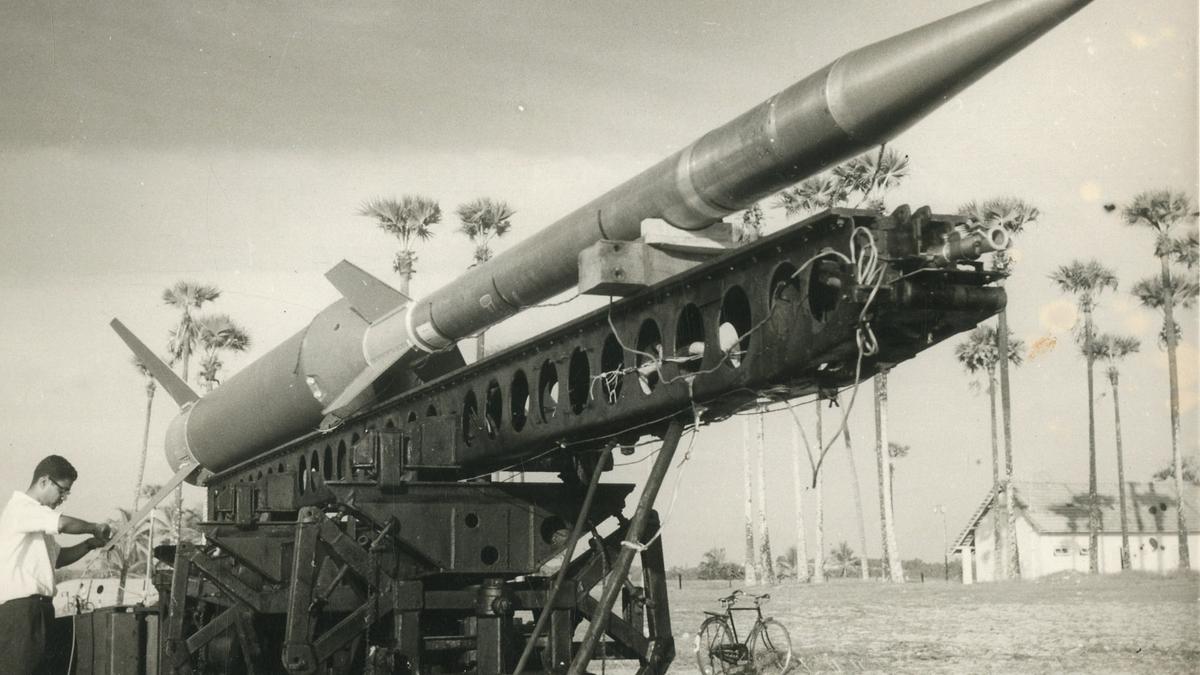
Six decades since Thumba launch, slew of private cos prep for flight Premium
The Hindu
Indian space program milestones, satellite launches, private sector initiatives, and upcoming missions summarized by space enthusiast Pradeep Mohandas.
Preview: November 21 was 61 years since the birth of the Indian space programme. On this date in 1963, scientists launched a Nike-Apache sounding rocket from Thumba in Kerala. These rockets helped the Indian Space Research Organisation (ISRO) master the solid propellant technology powering India’s launch vehicles today. Around the same time as this anniversary, India launched its first satellite onboard a SpaceX rocket even as multiple Indian private sector entities geared up for launches of their own.
NewSpace India, Ltd. launched the 4,700-kg GSAT-N2/GSAT-20 satellite onboard a SpaceX Falcon 9 rocket from Florida. N2 wasn’t launched onboard an Indian launch vehicle because its weight exceeded the payload capacity of the country’s most powerful rocket, the LVM-3, which can place satellites weighing up to four tonnes in the geostationary transfer orbit (GTO). INSAT-1D was the last such satellite launched from Florida, in 1990.
GSAT-N2 is a Ka-band high throughput communication satellite built by ISRO to enhance broadband services in underserved areas, including the northeast, Andaman & Nicobar Islands, and Lakshadweep. It will also support services like in-flight internet connectivity and the Smart Cities Mission.
The satellite was placed in a GTO with a perigee of 250 km, an apogee of 59,730 km, and at a 27.5°inclination. From here, the satellite will use its thrusters to move to a geostationary orbit at 63° E longitude over the next few days.
Next, ISRO is preparing to launch its PSLV-C59 mission bearing the European Proba-3 mission. The Polar Satellite Launch Vehicle (PSLV) will fly in its extended length configuration (XL), which was last used to launch Aditya-L1 in September 2023.
The twin Proba spacecraft to study the Sun arrived at Chennai on November 6 and will be integrated with the launch vehicle. Liftoff is currently scheduled for 4 pm IST on December 4.
Speaking of impending launches: India’s astronaut-designate Shubhanshu Shukla, who is set to fly to the International Space Station in 2025, is undergoing training at the European Space Agency’s European Astronaut Centre. This part of the training is to familiarise astronauts-to-be with the European modules of the space station.

Several principals of government and private schools in Delhi on Tuesday said the Directorate of Education (DoE) circular from a day earlier, directing schools to conduct classes in ‘hybrid’ mode, had caused confusion regarding day-to-day operations as they did not know how many students would return to school from Wednesday and how would teachers instruct in two modes — online and in person — at once. The DoE circular on Monday had also stated that the option to “exercise online mode of education, wherever available, shall vest with the students and their guardians”. Several schoolteachers also expressed confusion regarding the DoE order. A government schoolteacher said he was unsure of how to cope with the resumption of physical classes, given that the order directing government offices to ensure that 50% of the employees work from home is still in place. On Monday, the Commission for Air Quality Management in the National Capital Region and Adjoining Areas (CAQM) had, on the orders of the Supreme Court, directed schools in Delhi-NCR to shift classes to the hybrid mode, following which the DoE had issued the circular. The court had urged the Centre’s pollution watchdog to consider restarting physical classes due to many students missing out on the mid-day meals and lacking the necessary means to attend classes online. The CAQM had, on November 20, asked schools in Delhi-NCR to shift to the online mode of teaching.










